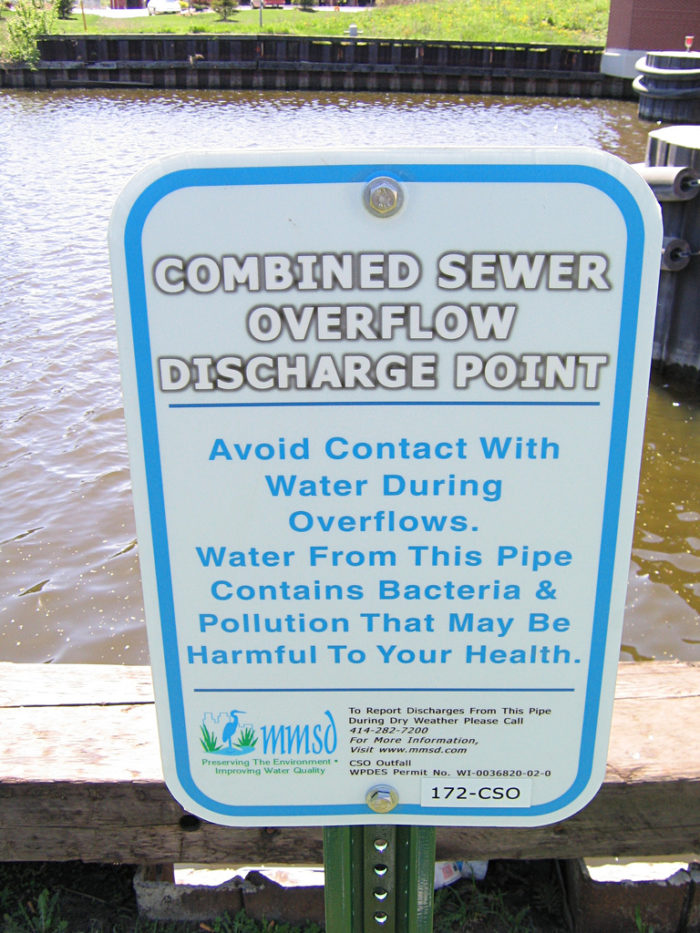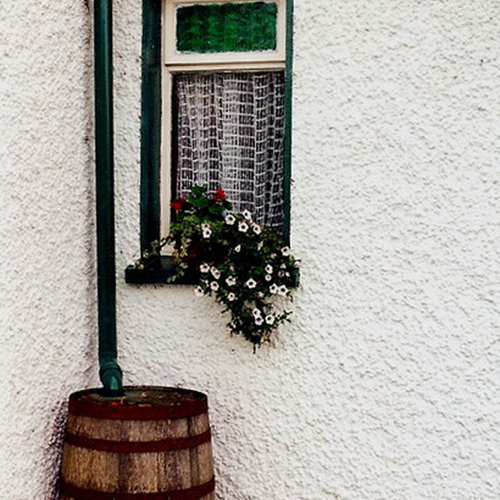
Image Credit: Michael Pereckas / CC / Flickr
The RainWise program, run jointly by Seattle Public Utilities (SPU) and King County Wastewater Treatment Division (WTD), empowers homeowners and other private property owners to help stop the region’s largest source of water pollution: polluted runoff and specifically the sewer overflows that occur when heavy rains flood the city’s combined sewer system.
The system handles both urban runoff and sewage using the same sets of tunnels and pipes, but big rain events overload the system causing both runoff and sewage to overflow into nearby waters. Over 40,000 homes across Seattle are eligible for RainWise rebates for rain garden and cistern installations.
In partnership with Washington State University, Stewardship Partners launched the 12,000 Rain Garden campaign to support landowners across all 12 counties that surround Puget Sound to build rain gardens and capture urban runoff where it falls. Rain gardens use plants and landscaping to intercept, collect, and absorb runoff from impervious surfaces; they absorb and cleanse runoff onsite, similar to how a native forest functions, rather than sending it to the city’s pipes.
RainWise offers homeowners reimbursements up to 100% of the cost of professional design and installation of their rain gardens and/or cisterns (basically a rain barrel that holds 200 or more gallons), and rebates average about $4,000. And homeowners have shown a lot of enthusiasm for the program. Already, nearly 1,000 homeowners have gotten involved, capturing runoff from 25 acres of impervious surfaces, totaling over 13 million gallons per year.
A problem with rebate timing
In fact, by all measures except one, the program has been a big success. Homeowners across diverse neighborhoods and income levels are interested in participating, surveys show. But here’s the problematic measure: Actual RainWise reimbursement applications were coming mostly from higher-income areas. The reason? Only higher-income homeowners could afford to pay out of pocket for the design and construction of a rain garden and then wait weeks for a rebate check.
The National Resources Defense Council believed we could help change that dynamic, so that all Seattle homeowners could participate in RainWise. We had been working with SPU on ways to expand and improve RainWise, as had a local nonprofit group called Stewardship Partners. One of the solutions that Stewardship Partners has begun to develop is a low-cost line of credit that would be offered to RainWise contractors and repaid by the RainWise rebate. This would eliminate the need for homeowners to pay upfront for rain gardens and wait for reimbursements.
NRDC’s Center for Market Innovation and Water Program then began a collaboration with Stewardship Partners to develop not only a financial solution for RainWise, but a model that could help cities across the country develop more efficient and equitable incentive programs of their own. The partnership soon expanded to include Craft3, a nonprofit Community Development Financial Institution, which is now offering RainWise Pilot Access Loans (RPALs) to RainWise contractors and improving access to RainWise for homeowners and landowners who don’t have cash available up front.
More help with rain gardens
NRDC was also able to anticipate that lower-income homeowners might also be deterred from participating in RainWise when the RainWise rebate did not cover the full cost of a rain garden. Here, as with the RPAL, NRDC was able to put together a financial analysis that helped Stewardship Partners design, fund, and launch the RainWise Access Grant program.
The Access Grant, which became available in June 2015, is a complement to the RPAL and will to cover up to $500 in RainWise-related expenses that otherwise might not get reimbursed (or $1,000 for nonprofit landowners like churches and mosques)
People who live in Seattle know that water quality matters. A mind-boggling 14 million pounds of toxins enter Puget Sound each year. Rain gardens are a smart and proven way of using beautiful landscaping to protect local waterways, safeguard the region’s unique natural habitats, improve homes and neighborhoods, limit flooding, and save taxpayers and ratepayers millions of dollars in avoided stormwater management costs. Working closely with local partners Stewardship Partners and Craft3, who now manage the Access Grant and RPAL programs, respectively, NRDC was able to help ensure that economic status will not be a barrier to Seattle residents who want to do their part to keep local waterways clean.
Alisa Valderrama is a senior project finance attorney with the NRDC in New York. This post originally appeared at the NRDC Switchboard.
Weekly Newsletter
Get building science and energy efficiency advice, plus special offers, in your inbox.













One Comment
Ann Arbor Green Streets Policy
Thanks for the article and all the great work NRDC has done in pollution reduction efforts.
Here in Ann Arbor we now have a new Green Streets Policy whereby any street reconstructed will be evaluated for being a Green Street. Streets in Ann Arbor have been shown to contribute about half the runoff of fresh rainwater (stormwater) and as such can be a major solution to flood hazard, pollution and groundwater recharge. The Allen's Creek Watershed Group working with the City Environmental Commission Water Committee worked for over 2 years to devise this plan. So Green Streets can be streets with rock infiltration beds below, rain gardens and bioswales alongside, use porous pavements with infiltration beds below or use other infiltration options.
A city civil engineer told the Water Comm. that he felt with the first Green Street efforts he planned and implemented will cost less and last longer than conventional streets. The city has trial efforts using porous pavement on roadways and parking lots that have been shown by others to handle up to 200" an hour rainfall. We have a porous pavement parking lot recently constructed by the U of M here in Ann Arbor that has been tested by the city and shown to handle up to 1,300" an hour.
With much higher rainfall amounts predicted for SE Michigan (and the US) this could be a real cost effective hedge against catastrophic flooding with greatly reduced pollution flowing to our waterways with the much impacted Lake Erie, with historic rainwater runoff pollution related record breaking algae blooms again forming in the last few years. Toledo was forced to shut off its drinking water intake in Lake Erie for many days due to the algae blooms in the summer of 2014, water supply for close to 1/2 Million people.
The Allen's Creek Watershed Group has also pushed for, and we now have, city credits on stormwater fees for use of rain gardens, bioswales rain barrels and porous pavements by businesses and homeowners.
Log in or create an account to post a comment.
Sign up Log in